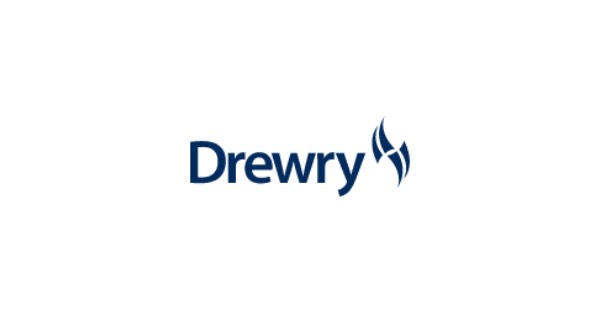Despite high inflation, restrictive monetary policy and ongoing geopolitical tensions, stock prices of liner companies continue to strengthen on the back of a slight upward revision in the macroeconomic outlook. In YTD 2023 (ending 8 March 2023), the Drewry Container Equity Index rose by 15.0%, following an 11.4% increase in the 4Q22. As a result, this has expanded the index variance vis-à-vis the broader S&P index – which remained relatively flat on a YTD basis (up 4.0%). In 2022, the index lost 43.7% of its valuation, with a major fall recorded in 2Q22 (-24.8%) and 3Q22 (-30.1%).
Barring a few players, most container shipping companies recorded a positive stock return on YTD basis compared to the double-digit declines in 2022. This gain in the equity valuations, which came in despite the continuous fall in spot freight rates, a slump in 4Q22 profitability and a marked dropped in the 2023 industry outlook, suggests that the market participants have already accounted for the nearterm weakness and the worst is behind us. However, inflation has proved to be much more sticker than anticipated, and much will depend on its trajectory.
The container shipping industry witnessed exceptionally high freight rates in the last two years. However, the recently published results of liners confirm the end of the purple patch they had been going on.
In line with our expectations, both HLAG and Maersk posted higher revenue and EBIT growth in 2022 (YoY), but marked a significant decline in 4Q22. HLAG’s revenue surged 38.1% in 2022, primarily led by higher average freight rates, while volumes remained stable. Consequently, full-year EBIT expanded by 66.2%, translating into a higher margin of 50.7% in 2022 (vs 2021: 42.2%). Meanwhile, 4Q22 financials painted a different picture as the 4Q22 revenue and EBIT declined by 19.4% and 36.4%, respectively, resulting in a 7.9 percentage point dip in its margin (4Q22: 41.7% vs 4Q21: 49.6%).
Similarly, for APMM, the last quarter proved to be an inflexion point showcasing the weakness in the broader operating environment. In spite of posting a top line decline of 3.7% in 4Q22, its consolidated revenue increased by 32% in 2022. Its operating profit (EBIT) also showcased a similar trend, with a fall of 22.8% in 4Q22 and an increase of 56.9% in 2022.
In line with dimming industry prospects, both these companies significantly reduced their 2023 profitability guidance.
At the current level, the industry’s P/B ratio is consolidating at a massive discount to its peak achieved in 2H21 and the long-term historical average and pre-pandemic level, marking a significantly higher potential than the downside risk.
Source: Drewry Maritime Financial Research









































